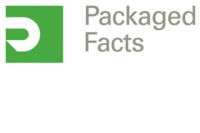Consumer Interest in Nutrition Facts Panel
Interest in reading the Nutrition Facts label has steadily waned among U.S. households, according to The NPD Group.

Through its National Eating Trends service, NPD asks consumers their level of agreement with the statement, “I frequently check labels to determine whether the foods I buy contain anything I’m trying to avoid.” In 1990, after the Nutritional Labeling and Education Act (NLEA) was passed, 65% of consumers completely or mostly agreed with the statement, that percentage decreased to 60% in 1994 shortly before the Nutrition Facts labels began appearing on food packaging, and rose to 64% in 1995 after the labels were on food packaging. Since 1995, the percentages of consumers in agreement have ranged from a high of 61% to a low of 48% in 2013.
“The most likely reason for this decline is that the effort succeeded in educating Americans about what’s in their food,” says Harry Balzer, NPD chief industry analyst and author of Eating Patterns in America. “After all, how many times do you need to look at the Nutrition Facts label on your favorite cereal, or your favorite juice, and any other food you routinely consume?”
NPD also tracks what consumers usually look for when they do read the Nutrition Facts label. According to NPD’s Dieting Monitor, which examines top-of-mind dieting and nutrition-related issues facing consumers, the top five items consumers who read the label look for are, in consecutive order, calories, sugar, sodium, fat, and carbohydrates.
“It’s a safe bet that Americans now want more information, but be careful, there are always new issues that come up every few years,” says Balzer. “If the Nutrition Facts label is to continue to educate, it should allow for changes more often than once every 20 years. For example, gluten, probiotics and omega-3 were not on the radar screen 20 years ago.”
Looking for a reprint of this article?
From high-res PDFs to custom plaques, order your copy today!





